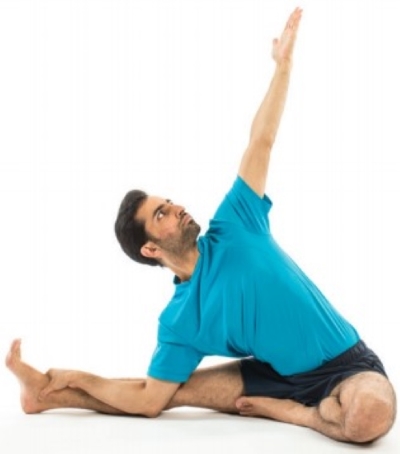 What made you start yoga?
What made you start yoga?
Yoga was not something I wanted to pursue long term, but after secondary school, all my classmates got admitted their chosen degree courses but I had no idea what to do or where to go. Then my uncle, a yoga teacher in Singapore, suggested to my dad that I should be sent for a one-month course to a yoga university in Bangalore. That is how it all started.
What inspired you to become a yoga teacher?
I did my first yoga teacher training at Swami Vivekananda Yoga University, Bangalore, where I received my Bachelor’s degree in 2008. The initial idea behind teaching yoga in Bangalore city was to earn a living, for which I used to travel on bike from house to house to teach 1-on-1 yoga sessions. Now I teach to share my experience.
What is your main focus when you teach yoga?
It is to be able to connect to each student present in the class, and help protect them from injuries while practicing. I always tell students not to have expectations and not to pre-define the outcome of the practice— instead use the memory from their last practice to improve something today and see if some new knowledge can come each time. If not, the practice becomes monotonous and boring.
How has the Singapore yoga scene changed in the last few years?
I have been teaching in Singapore since 2013 and the number of yoga practitioners is increasing day by day. I am glad to say that my students’ perspective towards yoga has changed from just a fitness routine to understanding their own patterns and behavior (physically, mentally and emotionally), which has helped them to look within.
Who is your guru and what was the biggest learning for you?
I have many gurus who have guided me through my yoga path, and still do. I am connected to all and try to see them once or twice a year. The continuous guidance I get now is from H.S. Arun, a senior Iyengar yoga teacher in Bangalore, and my biggest learning from him is to experiment well on myself before teaching others.
What is the most important thing about Iyengar yoga that everyone should know?
Guruji B.K.S Iyengar’s method of yoga practice was to integrate all seven limbs as taught by Patanjali. The eighth limb, Samadhi, is the ultimate state of enlightenment in yoga which cannot be taught. In Iyengar yoga, one has to practice with the body and use the mind to reflect on every action, whether right or wrong. Then, intellect has to guide the body to make necessary adjustments. This means asana cannot be done by the body alone, but also requires the consciousness.
This article was first published in the print edition of Yoga Journal Singapore, which is now Yogahood Online.







